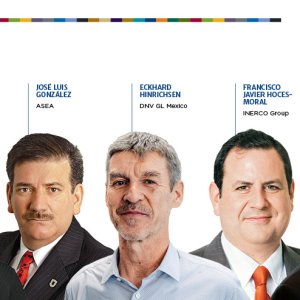
Mexican Petroleum Fund Not Likely to Contribute to Long-Term Fund
The Mexican Petroleum Fund (MPF) expects to close 2016 with revenues between 1.3-2.7 percent of GDP, which means it will not contribute to a planned long-term sovereign fund yet, Mauricio Herrera, Director General of the Mexican Petroleum Fund, told the 2016 Mexico Oil & Gas Summit.
Speaking to an audience of industry stakeholders and decision-makers, Herrera explained the functioning of the MPF as a public trust, where the central bank acts as a trusty from the Finance Ministry. The MPF has three specific purposes: receiving and distributing hydrocarbon revenues, the administration of financial contracts and the creation and administration of a long-term sovereign wealth fund.
According to Herrera, the hydrocarbon revenues that the MPF receives come from the income generated by PEMEX and private operators. The contracts that were signed last year and that came into effect in September contributed MX$3,499 billion, of which 99.9 percent were revenues transferred by PEMEX with only 0.1 percent coming from private enterprises. This percentage is expected to vary depending on the type of contract. Evaluation-phase contracts, such as those signed last year, only pay an exploration fee of MX$2 million, which explains the 0.1 percent contribution in 2015. Profit-sharing contracts are expected to make a more substantial contribution to the fund once the operators begin production.
Once the fund receives the financial resources, they are transferred to a federal government stabilization fund that aids federal entities. The transfers are established under the law and they must comply with a pre-set order of destination and calendar. These transfers will never exceed 4.7 percent of national GDP, Herrera said. When the MPF receives revenues that surpass 4.7 percent, the extra resources are directly allocated to a planned long-term sovereign wealth fund.
Last year, the MPF received revenues equivalent to 2.2 percent of national GDP, meaning the fund did not make any contribution to the long-term fund. This year to date the fund has received MX$112 billion pesos, or 0.6 percent of GDP. “The MPF expects to close 2016 with revenues between 1.3-2.7 percent of GDP, which means the fund will not be able to contribute to the long-term planned fund,” Herrera said.
FINANCIAL MANAGEMENT
Herrera said that the MPF started operations in January 2015 and by February, it was receiving revenues from PEMEX on a monthly basis, totaling about MX$20 billion to MX$30 billion each month. Most of the fund’s activity during 2015 was to receive and transfer revenues as well as constructing the necessary infrastructure to administer the financial information from the new EP contracts, including the creation of a technological platform.
As of today, six contracts are pending. The contracts signed last year in Tenders 1 and 2 of Round One only paid exploratory fees. For Tender 3, 13 contractors will pay exploratory fees, regular royalties and additional royalties that were offered during the bidding process. The exploratory fee and the royalties will be paid up front while the additional royalties must be paid once production has started.
In his presentation, Herrera also discussed the monthly scheme that license contractors must follow. During the first 10 days of the month, the contractors and the National Hydrocarbon Commission must submit all information regarding the volume of production and the volume of product commercialization during the previous month. May 2016 was the first month that companies were required to present this information.
On the 17th day of the month, the FMP must receive the contractual value of the previous’ month production. Additionally, the fund has to publish the calculations of fees and royalties the contractor must pay to the Fund. Finally, on the last day of the month, the MPF must issue a certificate of payment in kind if the contractor has no outstanding balance. If there are differences in favor of the government from what the contractor estimated, the MPF will notify the contractor that it needs to pay the compensatory amount.
The tight monthly schedule makes it mandatory to have a technological platform that provides the authorities and contractors with the possibility to collect information in a timely matter. The Sistema de Información para los Pagos de las Asignaciones y Contratos de Hidrocarburos (SIPAC) was developed for this purpose. SIPAC has been ready since last September but it began working in June 2016.














